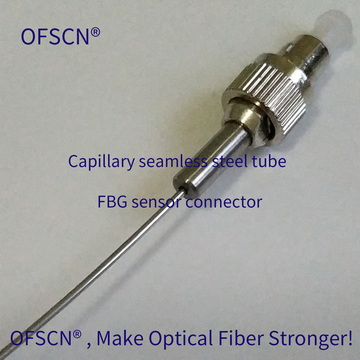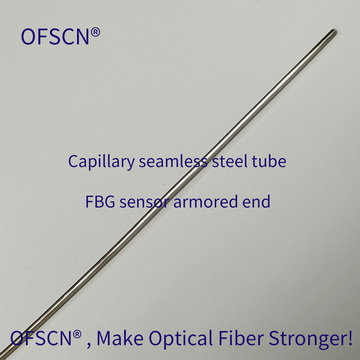This article discusses the sensitivity of FBG temperature sensors from the perspective of thermal conductivity (temperature change conduction speed). In other words, it refers to the ability of FBG temperature sensors to detect accurate temperature changes in the shortest possible time (their response capability to rapidly changing temperatures). It also highlights the high sensitivity and fast thermal conduction of the encapsulation materials and structure used in the OFSCN® capillary seamless steel tube series FBG temperature sensors.
1. Concept of Thermal Conductivity Sensitivity in Fiber Bragg Grating Temperature Sensors
Another way to analyze the sensitivity of FBG temperature sensors is by considering their response speed to temperature changes (relative to another article :"Sensitivity of FBG Temperature Sensors - Resolution Perspective").
In this context, the sensitivity of FBG temperature sensors refers to the time it takes for the sensor to reflect temperature changes when the measured object or environment undergoes temperature variations.
A highly sensitive sensor is capable of faster detection of temperature variations. In this regard, thermal conductivity efficiency and distance play a crucial role, which is influenced by the material and structure of the fiber optic grating sensor.
2. Reasons for High Thermal Conductivity Sensitivity of OFSCN® Capillary Seamless Steel Tube FBG Temperature Sensors
OFSCN® capillary seamless steel tube FBG temperature sensors ( FBG thermometer, FBG temperature probe ), provided by DCYS, have high sensitivity. The secret of it lies in the material and structure of the sensors.
 |
 |
|
Figure 1 |
Figure 2 |
As shown in Figure 1, 2, and 3, OFSCN® capillary seamless steel tube FBG temperature sensors adopt a unique patented technology of stainless steel seamless tube encapsulation. With a minimalist-style design and absence of adhesives or auxiliary materials, these sensors exhibit exceptional sensitivity and quickly respond to temperature changes in the tested environment.
The stainless steel material used in OFSCN® capillary seamless steel tube FBG temperature sensors has a thermal conductivity rate of 0.16/(W/m℃)×10², which is relatively high compared to other commonly used materials. Additionally, the small size of the sensor, with a diameter ranging from 0.9mm to 0.6mm, results in a short thermal conductivity distance. Consequently, the entire sensor demonstrates high sensitivity, promptly reflecting temperature fluctuations in the tested objects and environment.
 |
|
Figure 3 |
In addition, because the volume of OFSCN® capillary seamless steel tube FBG temperature sensor (FBG thermometer, FBG temperature probe) is small, the main structure diameter is generally only 0.9 mm, and the minimum diameter is 0.6 mm ( see Figure 4 below ). Therefore, the thermal conductivity distance is very short. Reflected in the demodulation equipment, it shows that the sensitivity of the entire sensor is very high, which can quickly reflect the rapid temperature change of measured object and environmental.
 |
|
Figure 4 |
3. Enhancing or Reducing the Thermal Conductivity Sensitivity of OFSCN® Capillary Seamless Steel Tube FBG Temperature Sensors
Of course, when we use the OFSCN® capillary seamless steel tube FBG temperature sensor (FBG thermometer, FBG temperature probe ) for temperature testing, it is not all the faster the sensor thermal conduction speed requires the better.
The thermal conductivity speed of OFSCN® capillary seamless steel tube FBG temperature sensors can be customized by altering the structure based on the stainless steel seamless tube encapsulation technology provided by DCYS. These modifications enable the adjustment of the sensor's thermal conductivity sensitivity according to specific requirements. For example:
 |
 |
 |
 |
 |
…… |
Note: The product illustrations above, the size is drawn according to the actual proportion, although the thickness may vary.
September 9, 2019, Note:
After discussing with industry experts, it has been confirmed that FBG sensors can detect temperature changes at a rate of at least 1000Hz, meaning they can reflect temperature variations over 1000 times per second. Due to the advantages brought by the unique structure and patented design of OFSCN® capillary seamless steel tube FBG temperature sensors, I have great confidence in their thermal conductivity sensitivity. However, due to limitations in testing methods and environments, specific numerical values cannot be provided at this time.
Our philosophy is: "OFSCN®, make optical fiber stronger!"
